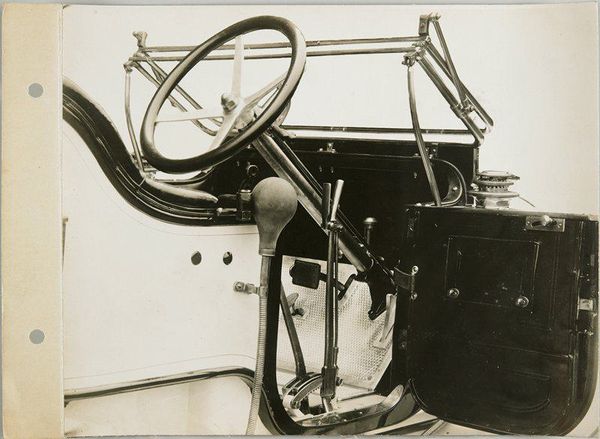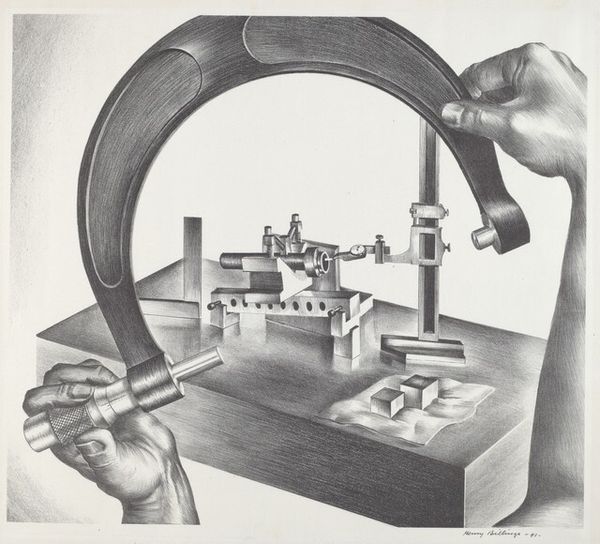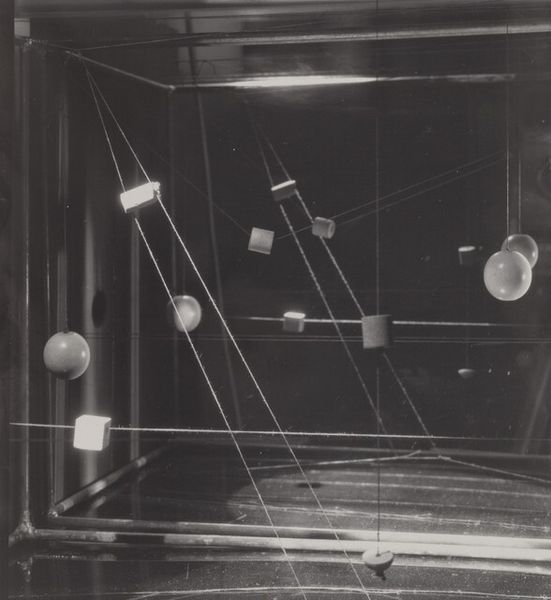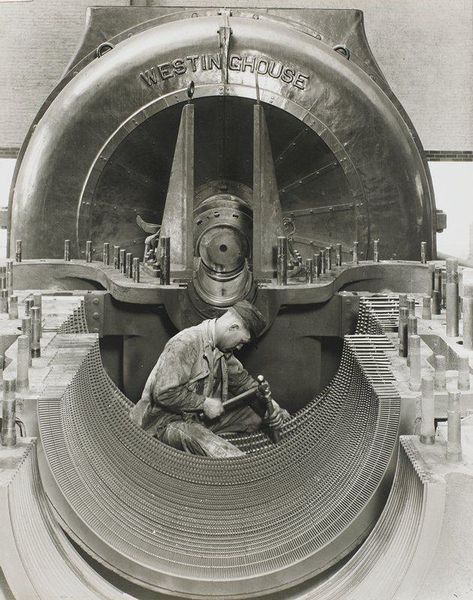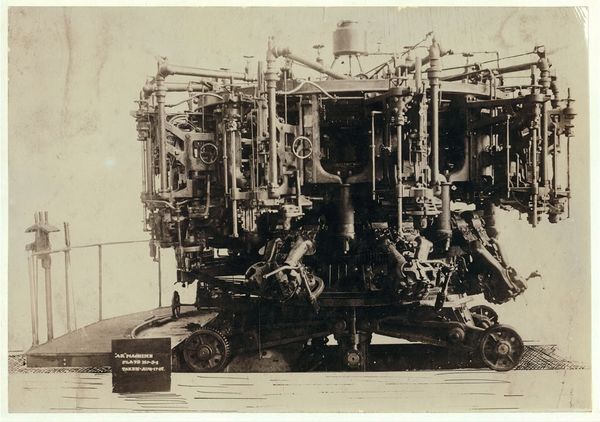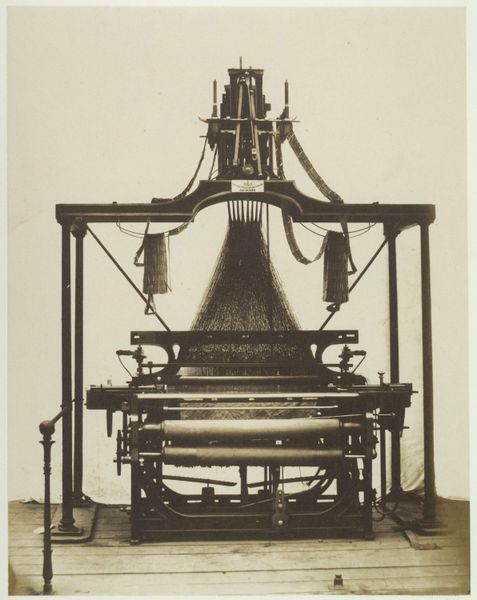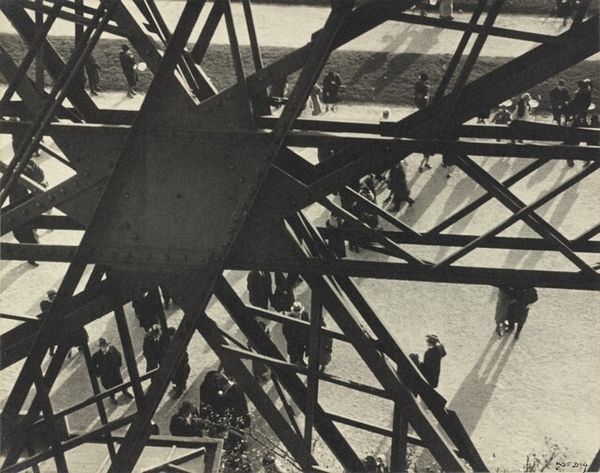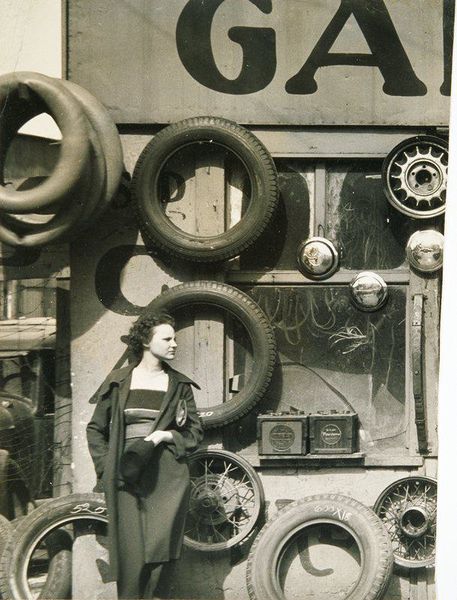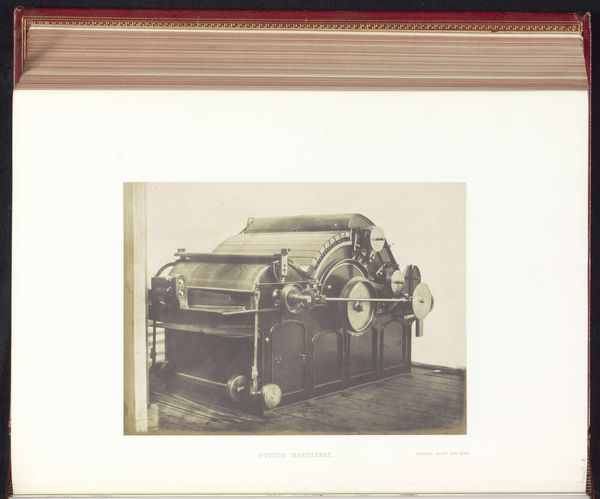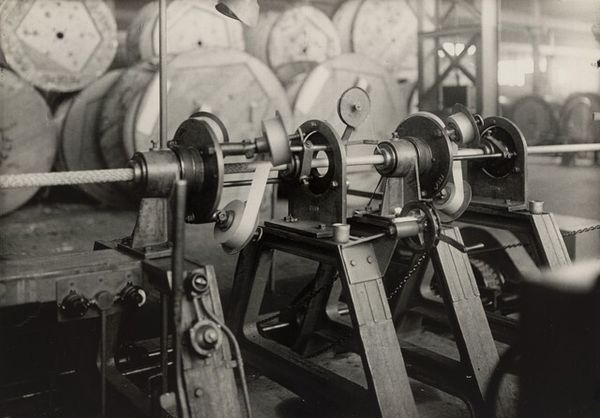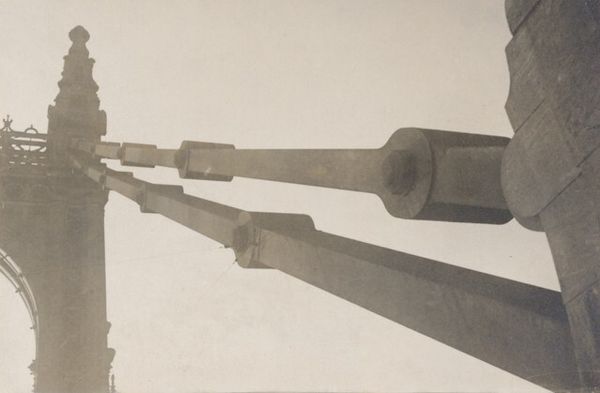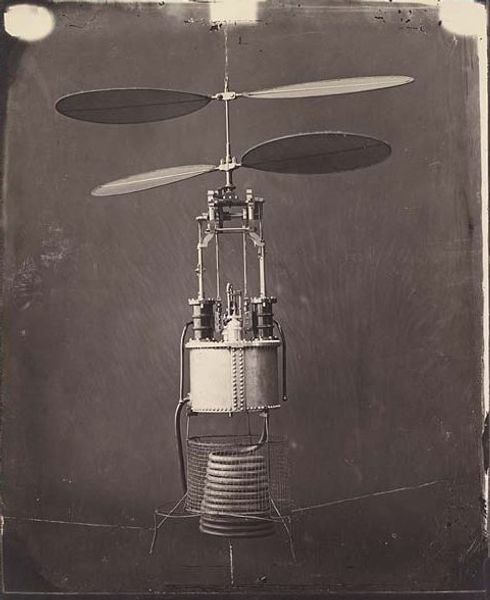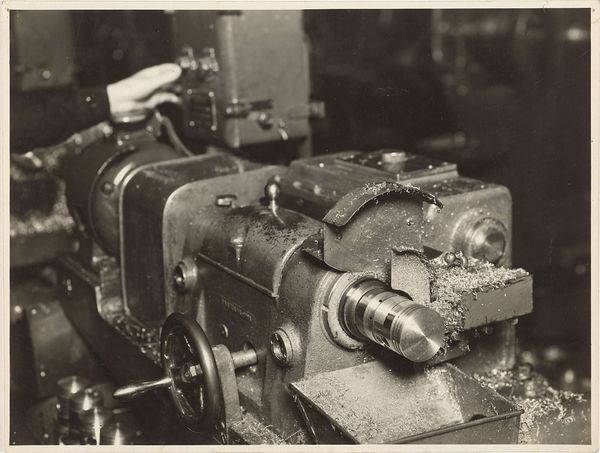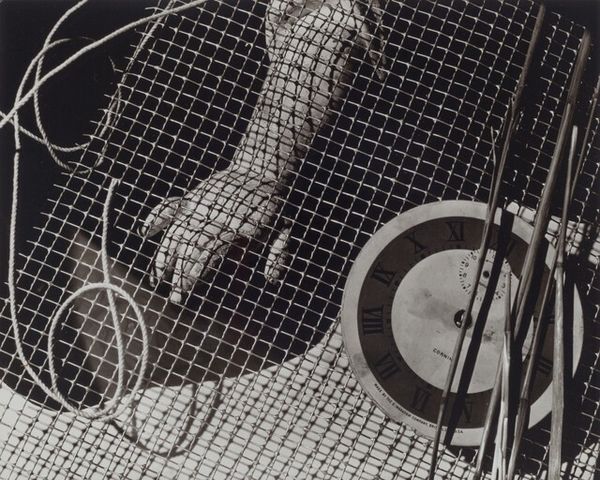
photography
#
portrait
#
soviet-nonconformist-art
#
social-realism
#
photography
Dimensions: overall: 39 x 28.7 cm (15 3/8 x 11 5/16 in.)
Copyright: National Gallery of Art: CC0 1.0
Curator: Arkadii Shaikhet’s photograph, taken in 1931, is titled “A Komsomol Youth at the Wheel.” It’s a striking piece of Soviet Social Realism. Editor: It certainly is arresting. My immediate reaction is that it communicates a potent feeling of being on the cusp, balanced between aspiration and labor. It’s all steel and serious expression. Curator: Indeed. Shaikhet captured the image with great attention to the details of production. The scale of the machinery dominates, hinting at the monumental industrial undertakings of the Soviet era. We see the youth positioned at the controls; we see every nut and bolt of this construction. Editor: I see that too, but what resonates is how the wheel in the young man’s hands resembles that of a ship's helm. This echoes themes of navigation, purpose, and the individual steering the ship of state towards the future. There’s a distinctly heroic, almost mythic quality about this industrial scene. Curator: And the deliberate heroicizing of labor here served a very clear ideological purpose. This piece exemplifies the art of the Soviet era. It puts labor, especially the efforts of young people, squarely in the center. It elevates the mundane to the monumental, a very conscious piece of social engineering. The message of industry is right here. Editor: I agree. I read the imagery, however, as connecting to a deeply-rooted visual vocabulary of forward movement and mastery. The light itself contributes. Notice how the light falls primarily on the young man and the machinery in front of him, while everything behind fades. This creates a sense of depth, symbolic, perhaps, of a break with the past, forging onward into the unknown future, piloted by a new generation. Curator: Yes, and don’t overlook the materials, the way the steel is almost sensually highlighted, a testament to Soviet capabilities, to the accessibility of industrial careers. It celebrates technological progress as central to societal advancement. I am looking at production and accessibility! Editor: Absolutely, the youth embodies this new era but also connects it, via image, to enduring motifs of leadership and vision. Thank you, that clarified a lot! Curator: I’ve never thought about that. And likewise. This gave a refreshing perspective to what Shaikhet tries to promote, the youth within the machine.
Comments
No comments
Be the first to comment and join the conversation on the ultimate creative platform.
